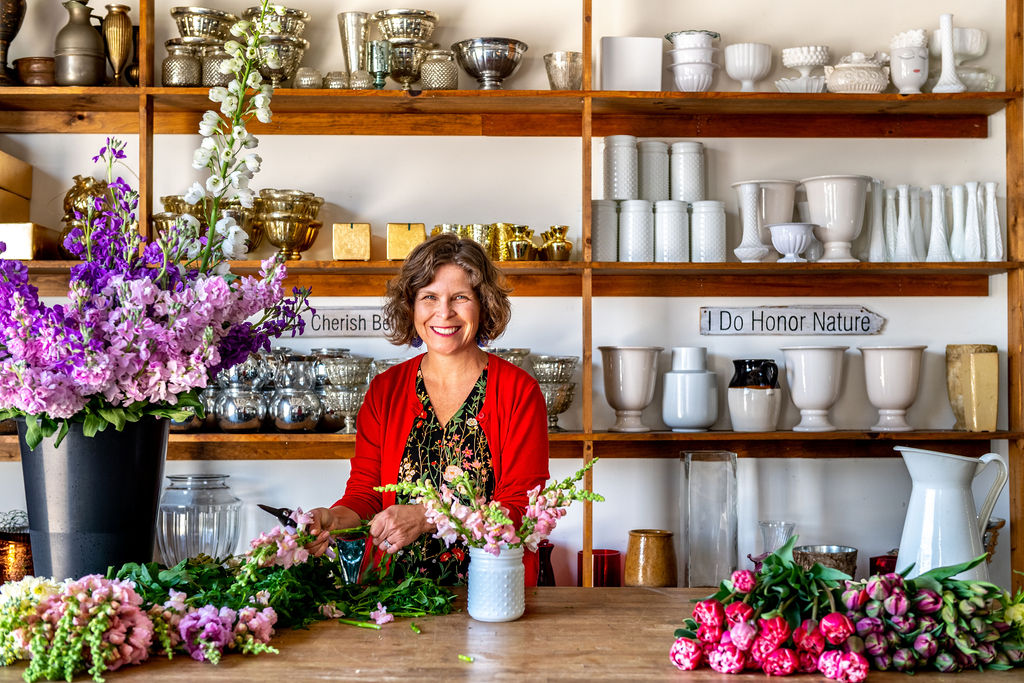Discover the Art of Floral Style: Tips From Expert Florists
Floral design is not merely an aesthetic venture; it is a nuanced art type based in concepts such as equilibrium, proportion, and contrast. Professional florists offer vital insights right into choosing the proper blossoms customized to particular events, making sure that each setup reverberates with its desired message.
Understanding Floral Design Principles
Commonly neglected by amateur flower shops, recognizing the essential principles of floral layout is important for producing visually enticing setups (florist lockhart). These concepts function as the foundation whereupon successful floral make-ups are developed, guaranteeing harmony and equilibrium in each production
The key principles include balance, proportion, contrast, rhythm, and unity. Balance refers to the distribution of aesthetic weight within an arrangement, which can be in proportion or asymmetrical. Percentage involves the connection in between the dimension of flowers and the container, making sure that each element matches the others. Comparison, achieved through differing colors, shapes, and textures, adds passion and depth to the design.

Rhythm overviews the visitor's eye through the arrangement, typically accomplished by repeating shapes or colors. Last but not least, unity guarantees that all parts of the design work with each other cohesively, developing a sense of completeness. By mastering these principles, flower designers can raise their job, transforming simple bouquets right into magnificent visual declarations.
Eventually, a solid grasp of these floral style principles not just boosts imagination but also promotes a much deeper admiration for the virtuosity associated with floral arrangements (florist lockhart). With method and application, amateur flower designers can develop their skills and produce memorable layouts
Choosing the Right Flowers
Choosing the ideal flowers is an essential action in the floral layout procedure, straight impacting the general aesthetic and efficiency of the plan. To begin, consider the occasion; different events ask for unique blossom kinds. For instance, charming settings may gain from roses, while cheerful parties could suit sunflowers or gerbera sissies.
Next, evaluate the color palette. Unified shades can stimulate certain emotions and boost the aesthetic allure. Utilize a color wheel to determine corresponding or comparable color plans that can produce a natural look. Furthermore, consider the season; seasonal blossoms not only make certain freshness however additionally typically come with a lower expense, making them a sensible option.
Another critical aspect is the intended longevity of the setup. By attentively picking blossoms, you can produce arrangements that reverberate with their intended objective and audience.
Methods for Arrangement

An additional reliable strategy is the "line layout," which stresses the all-natural lines and shapes of the blossoms. By utilizing long-stemmed blossoms, developers can create a feeling of movement and circulation in the arrangement, attracting the eye along the lines created by the stems. Furthermore, integrating varying heights in the arrangement adds depth and passion, permitting the customer to explore the item from different angles.
This method can evoke certain feelings and set the mood of the arrangement. Don't fail to remember the importance of adverse space; leaving gaps within the setup permits official statement for taking a breath room, improving the general visual and avoiding congestion.

Seasonal Floral Inspirations
Incorporating seasonal aspects into flower designs can exceptionally improve their appeal and significance. By lining up floral plans with the changing seasons, flower shops can evoke particular moods, styles, and colors that reverberate with customers and the setting. Each period supplies a distinct scheme of blooms and foliage that permits creative thinking and ideas.
In spring, think about the fragile charm of tulips, daffodils, and cherry blossoms, which personify revival and vibrancy. Summer offers itself to bold tones and rich structures with sunflowers, peonies, and zinnias, commemorating wealth. Fall's rich tones can be recorded via dahlias, chrysanthemums, and ornamental grasses, creating warm, welcoming setups that mirror the harvest. Wintertime supplies a calm aesthetic with evergreens, amaryllis, and seasonal berries, excellent for stimulating a feeling of tranquility and festivity.
Taking Care Of Your Arrangements
Looking after flower setups is important to keep their charm and durability. Appropriate care makes sure that your blossoms stay dynamic and fresh, enhancing the visual allure of your room. Begin by placing your setup in a trendy place, away from straight sunlight and drafts, as extreme temperature levels can trigger wilting and discoloration.
Frequently check the water level in the flower holder, ensuring it is enough to cover the stems properly. Change the water every few days to prevent microbial development, which can shorten link the life expectancy of your setup.
Furthermore, think about the kind of blossoms in your arrangement; some might call for certain care. Avoid putting your plans near ripening fruit, as ethylene gas can speed up wilting.
:max_bytes(150000):strip_icc()/DIAMONDRAW474-1ba03430361a41d88cabf2dd07150599.jpg)
Verdict
In final thought, mastering the art of flower design involves a comprehensive understanding of fundamental principles, mindful selection of blossoms, and the application of effective setup techniques. Seasonal inspirations further improve creativity, while appropriate treatment blog makes sure that flower screens keep their elegance and durability. By incorporating these elements, individuals can develop impactful arrangements that communicate feeling and serve their intended function, inevitably enriching the experience of both the designer and the recipient.